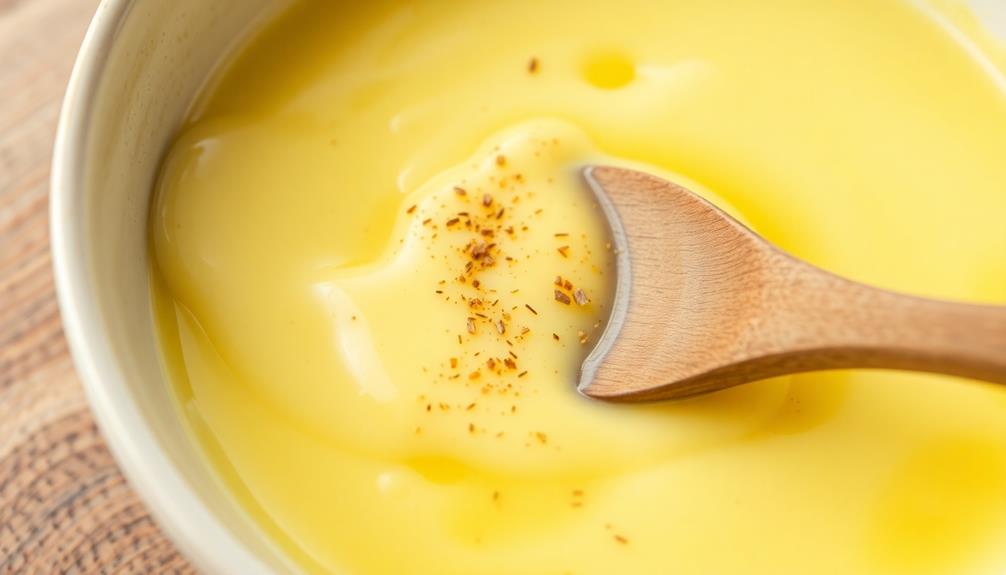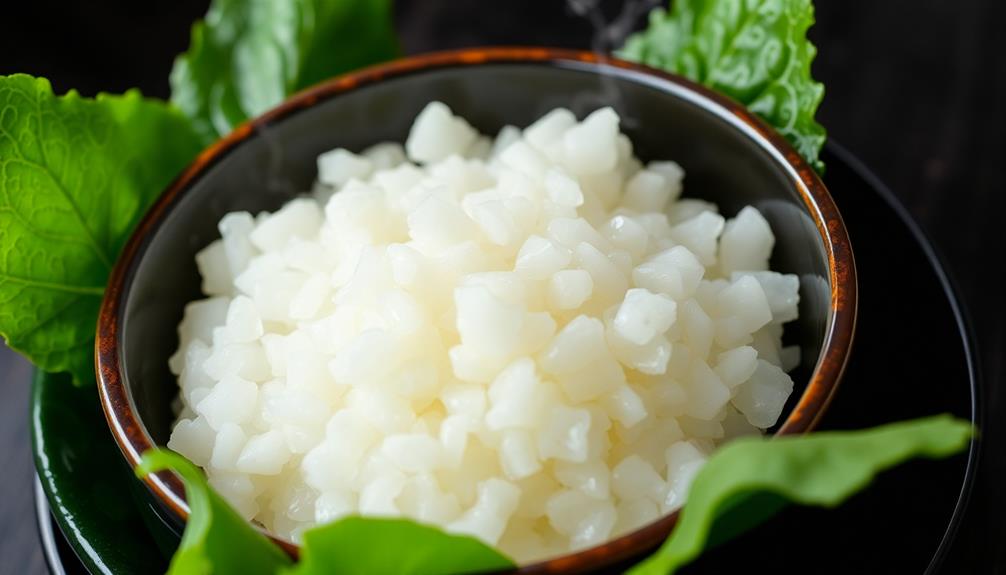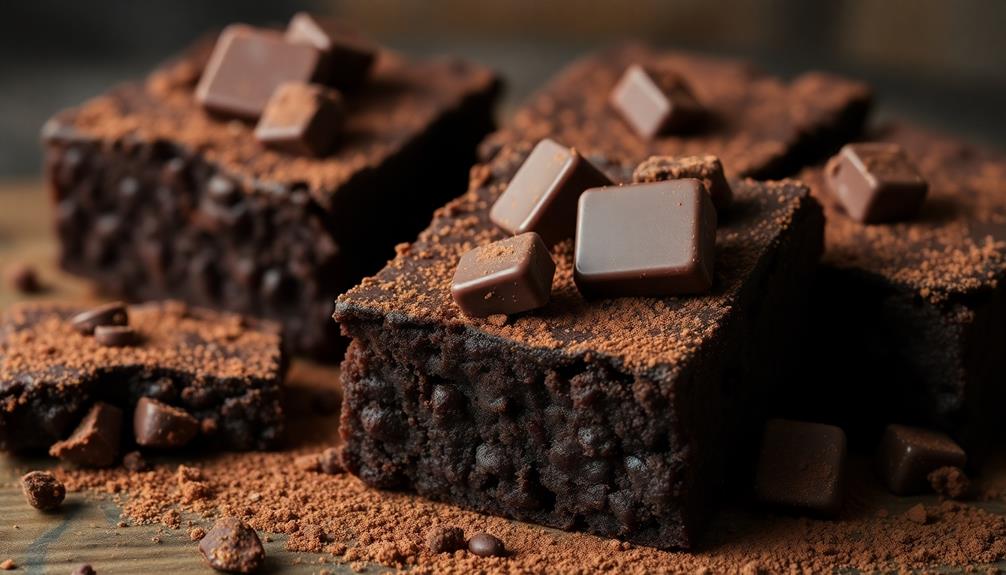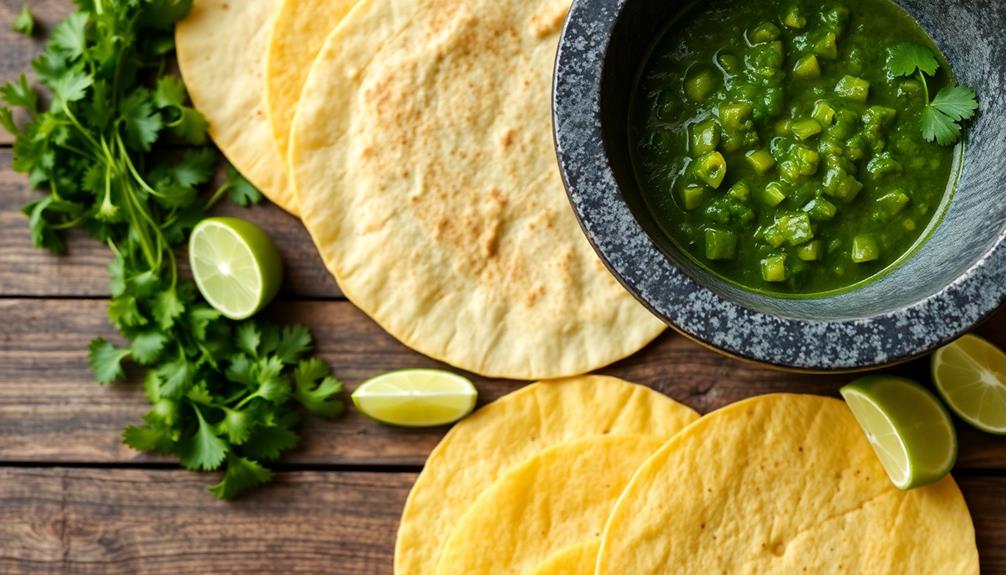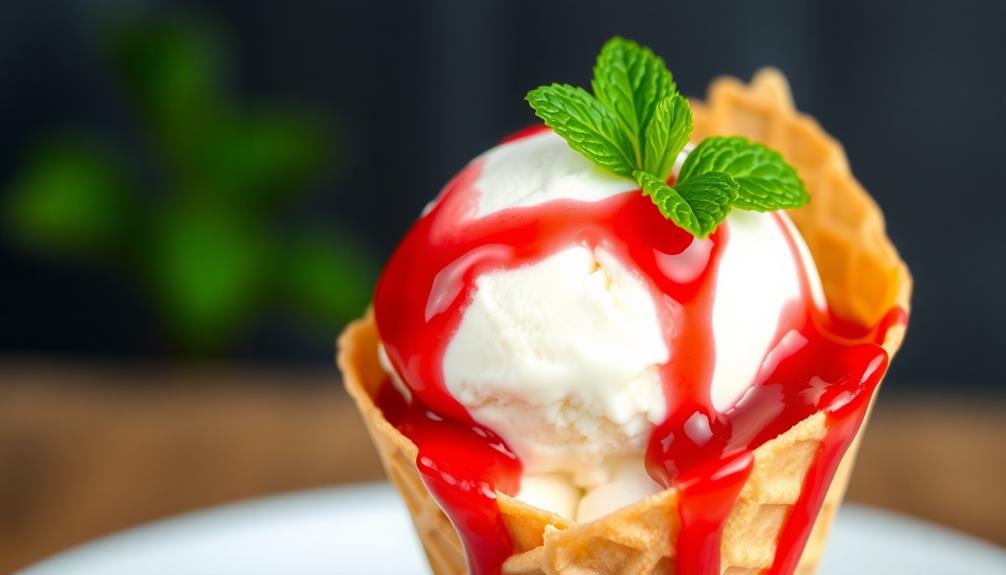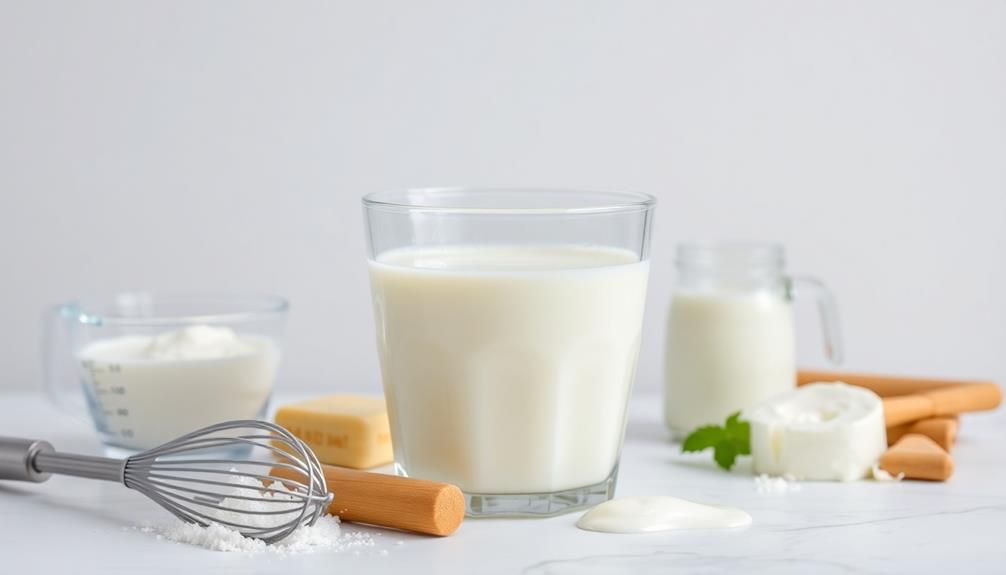Whip up a simple yet delectable homemade mayonnaise with just a few pantry staples. Start by cracking fresh eggs and whisking the yolks until light and fluffy – this will help the mayonnaise emulsify properly. Then, slowly drizzle in oil while continuously whisking to create a smooth, creamy base. For flavor, add a touch of vinegar, Dijon mustard, salt, and pepper. Chill the finished mayonnaise for at least 30 minutes to allow the flavors to meld, and you'll have a versatile condiment perfect for sandwiches, salads, and more. Discover even more tips to perfect your homemade mayonnaise by reading further.
Key Takeaways
- Use fresh egg yolks as the base to create a rich, creamy mayonnaise.
- Slowly incorporate oil into the egg mixture while whisking continuously to achieve a stable emulsion.
- Add a touch of acid, such as lemon juice or vinegar, to balance the flavors.
- Season with salt and pepper to enhance the overall taste of the mayonnaise.
- Refrigerate the homemade mayonnaise for at least 30 minutes before serving to allow the flavors to meld and the texture to set.
History
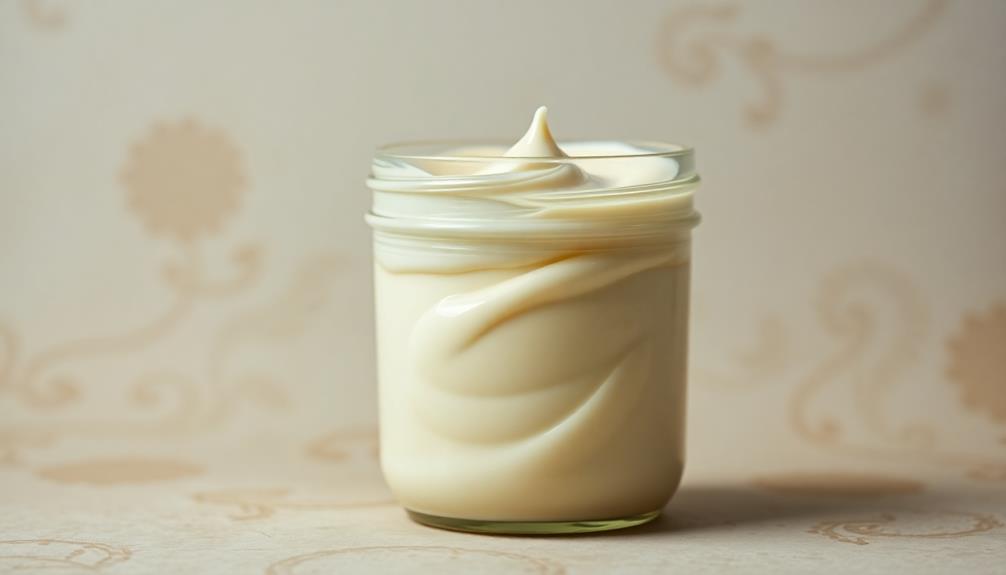
Mayonnaise, a ubiquitous condiment, traces its origins back to the 18th century. The exact origins are unclear, but it's believed to have been created in France by the chef of the Duke de Richelieu. The name "mayonnaise" may have derived from the city of Mahon, where the duke's victory over the British took place.
Initially, mayonnaise was a luxurious and sophisticated dish, reserved for the elite. It slowly gained popularity and became a staple in French cuisine. By the 19th century, mayonnaise had spread across Europe and eventually made its way to the United States.
Today, it's one of the most widely consumed condiments worldwide, found in everything from sandwiches to salads.
The classic mayonnaise recipe calls for just a few simple ingredients: egg yolks, oil, lemon juice or vinegar, and seasonings. The key to success is emulsifying the mixture to create that creamy, rich texture we all know and love.
Recipe

Mayonnaise is a classic condiment that can add a rich and creamy texture to a variety of dishes. This simple recipe will show you how to make your own homemade mayonnaise in just a few easy steps.
Homemade mayonnaise isn't only more flavorful than store-bought options, but it also allows you to control the ingredients. This recipe uses a few basic ingredients that you likely already have in your kitchen, making it a convenient and cost-effective choice.
Ingredients:
- 1 egg yolk
- 1 tbsp lemon juice or white wine vinegar
- 1/2 tsp Dijon mustard
- 1/4 tsp salt
- 1 cup vegetable or canola oil
Instructions:
In a medium bowl, whisk together the egg yolk, lemon juice or vinegar, Dijon mustard, and salt until well combined.
Slowly, while continuously whisking, drizzle in the oil a few drops at a time, allowing the mixture to emulsify before adding more oil. Once the mixture begins to thicken, you can increase the rate of oil addition.
Continue whisking until all the oil has been incorporated and the mayonnaise is thick and creamy.
When making mayonnaise, it's important to use fresh, high-quality ingredients and to take your time with the emulsion process. This will ensure a smooth, flavorful, and stable mayonnaise.
Homemade mayonnaise can be stored in an airtight container in the refrigerator for up to 1 week.
Cooking Steps
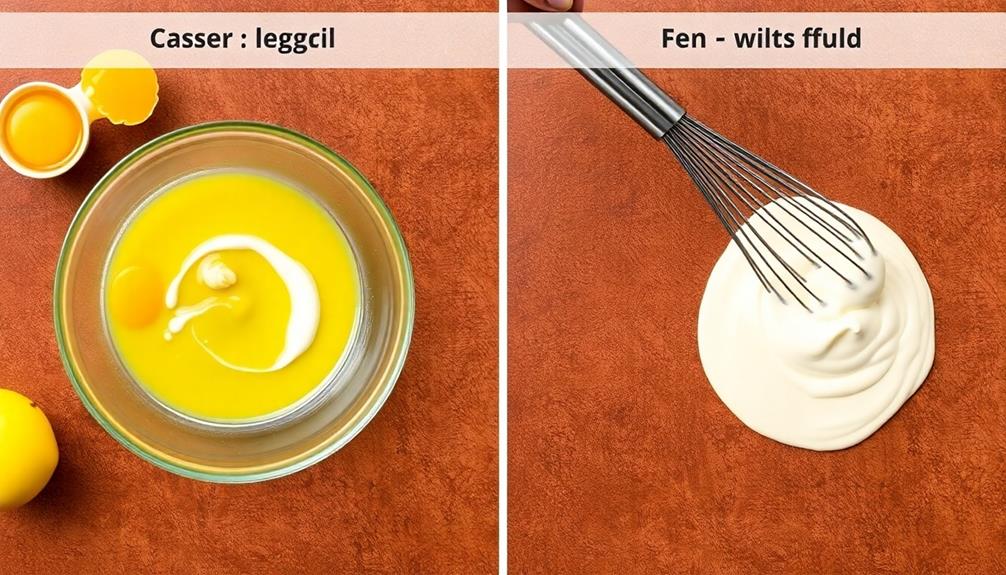
To make this simple mayonnaise, you'll first need to crack some eggs into a large bowl.
Then, slowly whisk in the oil while continuing to mix.
Don't forget to add a bit of vinegar and season with salt and pepper to taste.
Step 1. In a Large Bowl, Crack Eggs
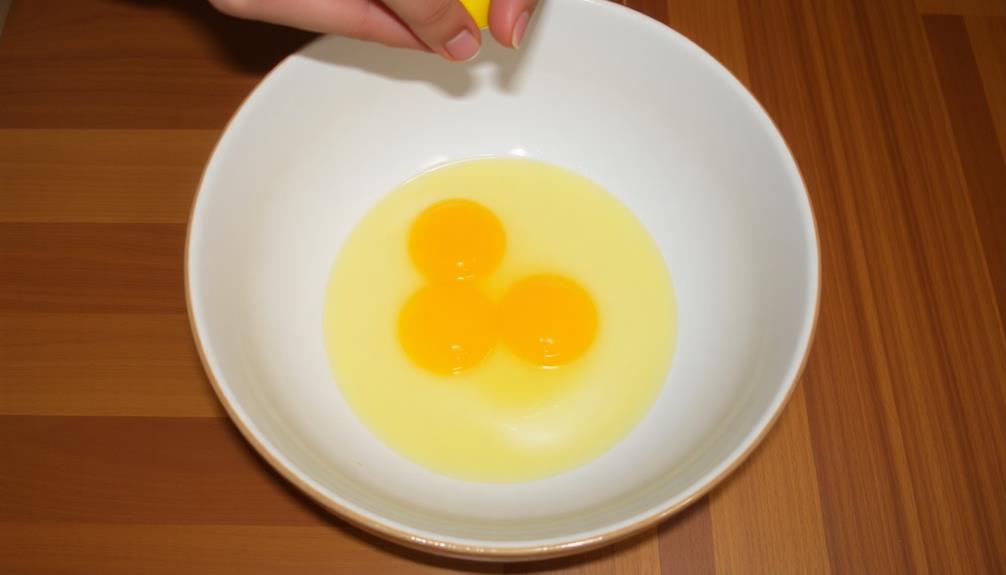
Having gathered your ingredients, crack the eggs directly into a large, spacious bowl. The size of the bowl matters – you want ample room to whisk the eggs vigorously without splattering. Use whole, fresh eggs for best results. Gently tap each egg against the side of the bowl, then use your fingers to pry open the shell and let the contents slide into the waiting vessel.
Be careful not to get any eggshell fragments in the mixture, as these can ruin the smooth, creamy texture you're aiming for. Once the eggs are peeled and chopped, gently fold them into the other ingredients using a soft spatula to maintain the desired consistency. For an easy egg salad recipe, simply combine hard-boiled eggs, mayonnaise, mustard, salt, and pepper to taste. Feel free to add herbs or chopped vegetables like celery for extra flavor and crunch. If you’re looking for an egg salad recipe for lunch that feels a little more elevated, try sprinkling in a pinch of smoked paprika or a dash of hot sauce for a subtle kick. Pair it with freshly baked bread, crackers, or crisp lettuce wraps to make a satisfying and versatile meal. With just a few tweaks, you can customize the recipe to suit your taste preferences and create a dish that’s both simple and delicious.
Once all the eggs are cracked, take a whisk and begin beating them thoroughly. Whisk in a consistent, circular motion, incorporating air to create volume and a light, fluffy consistency. Keep whisking until the eggs are fully combined and the mixture appears homogeneous.
This crucial step lays the foundation for your mayonnaise, ensuring the emulsion forms properly in the next phase.
Step 2. Slowly Whisk in the Oil
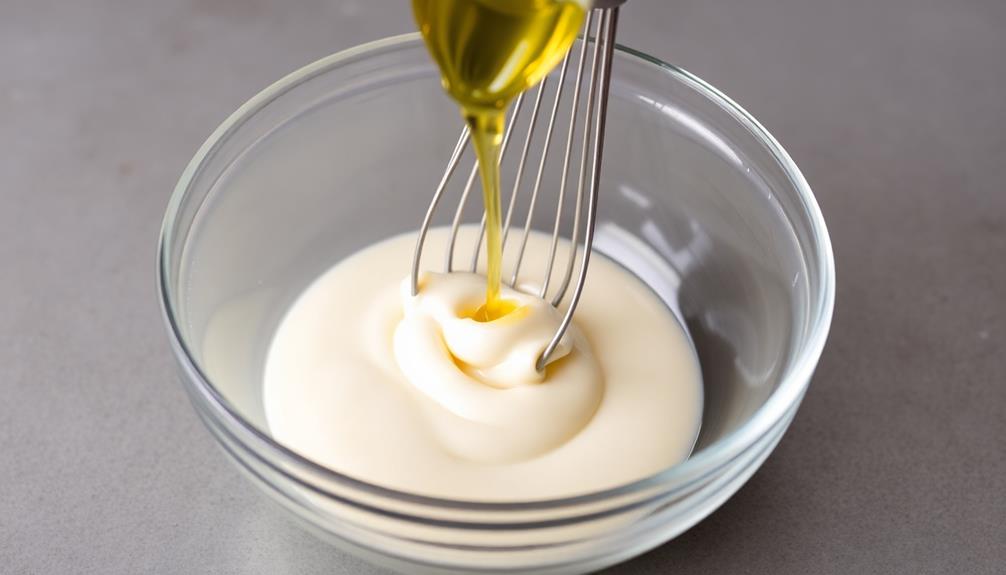
With the eggs thoroughly whisked, it's time to slowly introduce the oil. This is a crucial step in the mayonnaise-making process, as the oil must be incorporated gradually to emulsify properly with the egg yolks.
Start by adding just a few drops of oil to the egg mixture, whisking constantly to ensure the oil is fully incorporated before adding more.
Continue this slow, steady drizzle of oil, whisking vigorously after each addition. As the mixture thickens, you can gradually increase the amount of oil you add, but be sure to keep the stream thin and the whisking consistent.
The key is to work the oil in slowly, allowing the emulsion to form and the mayonnaise to thicken to your desired consistency.
Once all the oil has been incorporated, your mayonnaise should be smooth, creamy, and perfectly emulsified. At this point, you can season it with salt and any other desired flavors before using it in your favorite recipes.
Step 3. Add Vinegar
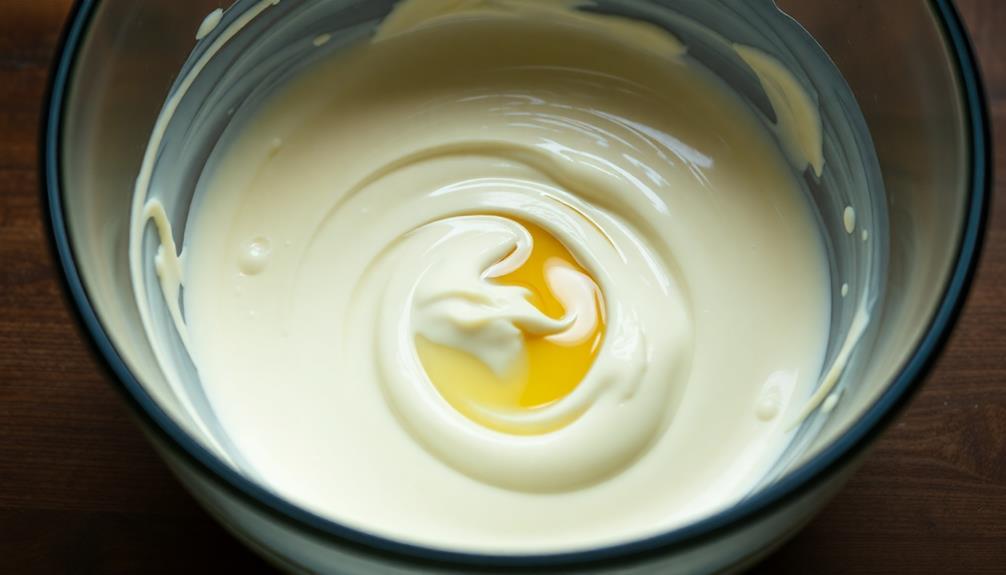
After the oil has been meticulously incorporated, the next key step is to add the vinegar. This step is crucial for achieving the perfect balance of flavors in your homemade mayonnaise.
Begin by selecting your preferred type of vinegar. White wine vinegar, apple cider vinegar, or even lemon juice can all work well, depending on the flavor profile you're aiming for. Once you've made your choice, slowly drizzle the vinegar into the mixture while continuing to whisk vigorously.
The vinegar serves several important functions. First, it helps to stabilize the emulsion, preventing the ingredients from separating. Additionally, the acidity of the vinegar balances the richness of the oil and egg yolk, creating a tangy and well-rounded flavor.
Finally, the vinegar helps to preserve the mayonnaise, allowing it to maintain its freshness for longer.
Whisk the vinegar in thoroughly until it's fully incorporated, and then proceed to the next step.
Step 4. Season With Salt and Pepper
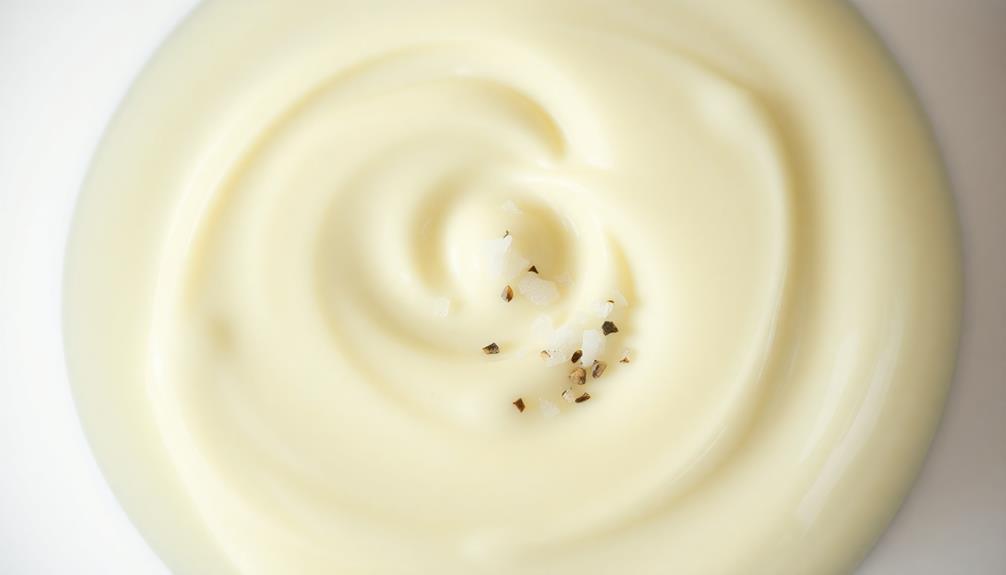
Next, season the mayonnaise with a pinch of salt and a few grinds of black pepper. This simple seasoning step helps to elevate the overall flavor profile of your homemade mayo.
The salt enhances the richness and balances the creaminess, while the pepper adds a subtle kick of heat and aroma.
When seasoning, start with a conservative amount of each and then taste. You can always add more if needed, but it's difficult to fix an over-salted or overly peppery mayonnaise.
A good rule of thumb is to use about 1/8 teaspoon of salt and 1/4 teaspoon of black pepper per cup of mayonnaise. Adjust to your personal taste preferences.
Step 5. Refrigerate and Serve Immediately
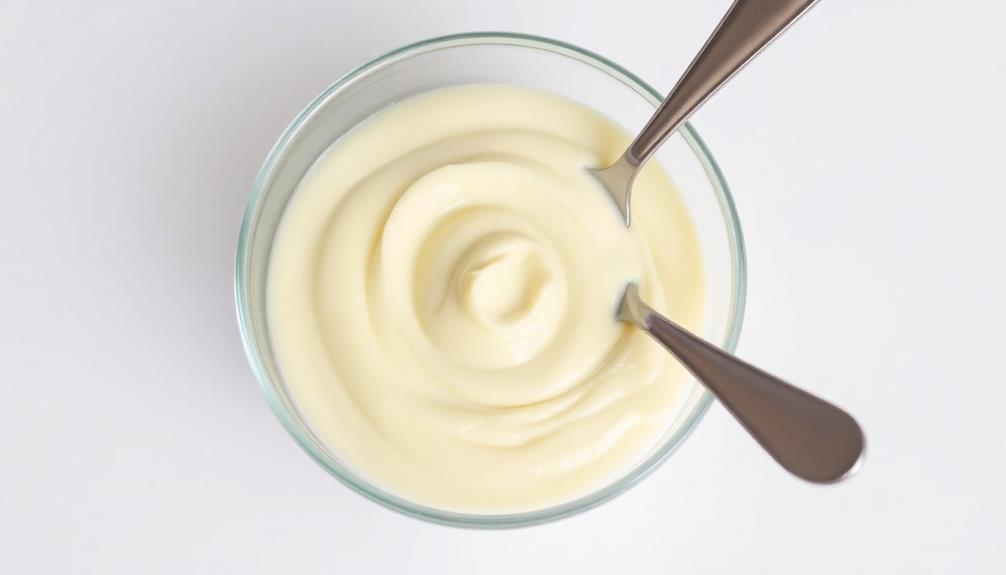
Now that you've seasoned the mayonnaise with salt and pepper, it's time to refrigerate and serve it immediately. This step is crucial for ensuring the perfect texture and flavor of your homemade mayonnaise.
First, transfer the mayonnaise to an airtight container or jar. This will help preserve the creamy consistency and prevent it from drying out. Be sure to leave a little headspace at the top to allow for expansion.
Next, place the container in the refrigerator and chill the mayonnaise for at least 30 minutes before serving. This chilling period allows the flavors to meld and the texture to set, resulting in a rich, velvety mayonnaise that's ready to enjoy.
When you're ready to serve, simply remove the mayonnaise from the fridge and use it as desired.
Whether you're dressing a salad, dipping your favorite veggies, or spreading it on a sandwich, the chilled mayonnaise will add a delightful creaminess and tang to your meal.
Final Thoughts
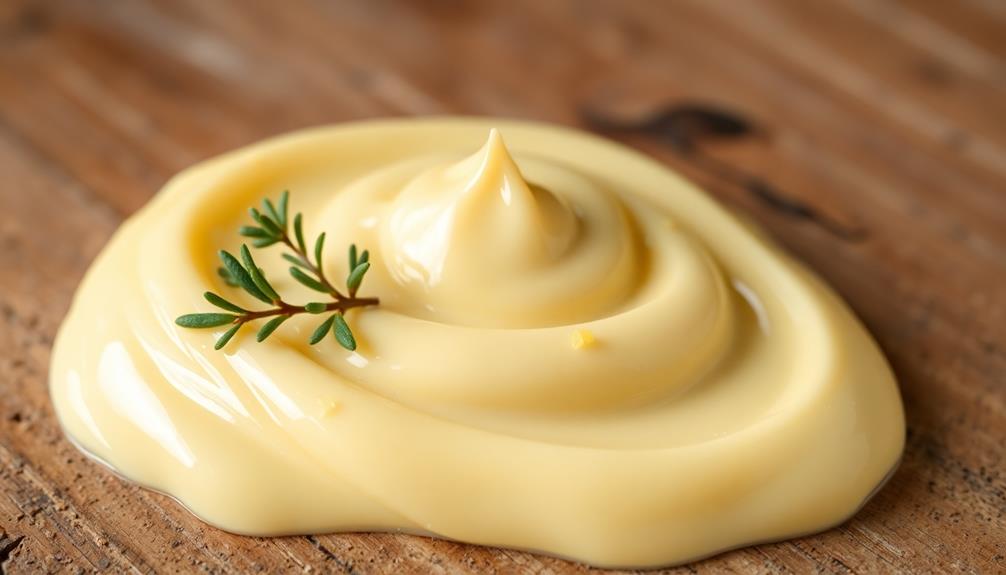
With the simple mayonnaise recipe now complete, you can enjoy the fresh, homemade flavor in your favorite dishes.
This versatile condiment can elevate a wide range of foods, from sandwiches and salads to dips and sauces.
While the recipe is straightforward, the true test of a great mayonnaise lies in the texture and taste.
The key is to slowly incorporate the oil while whisking vigorously to achieve that thick, creamy consistency.
Patience is crucial, as rushing the process can result in a runny or separated mixture.
Frequently Asked Questions
Can I Make Mayonnaise With a Hand Mixer?
Yes, you can make mayonnaise with a hand mixer. The key is to start with the egg yolk and slowly drizzle in the oil while mixing continuously. This will help the emulsion come together properly.
How Long Does Homemade Mayonnaise Last in the Fridge?
Homemade mayonnaise can last up to 1 week in the refrigerator when stored in an airtight container. The freshness and shelf life depend on the ingredients used and proper storage conditions. Be sure to consume it within the recommended timeframe for best quality and safety.
Can I Substitute Egg Yolks With Aquafaba?
You can substitute egg yolks with aquafaba, but the texture and flavor won't be quite the same. Aquafaba can work as a vegan mayo base, but it may not hold up as well in the fridge.
What Type of Oil Is Best for Mayonnaise?
For making the best mayonnaise, you'll want to use a neutral-flavored oil like canola or grapeseed oil. These oils won't overpower the other ingredients and will help create a creamy, emulsified texture.
Can I Use Pasteurized Eggs for This Recipe?
You can use pasteurized eggs for this recipe. Pasteurized eggs are safe to consume raw and won't pose the same food safety risks as unpasteurized eggs. They'll work just fine in your mayonnaise.
